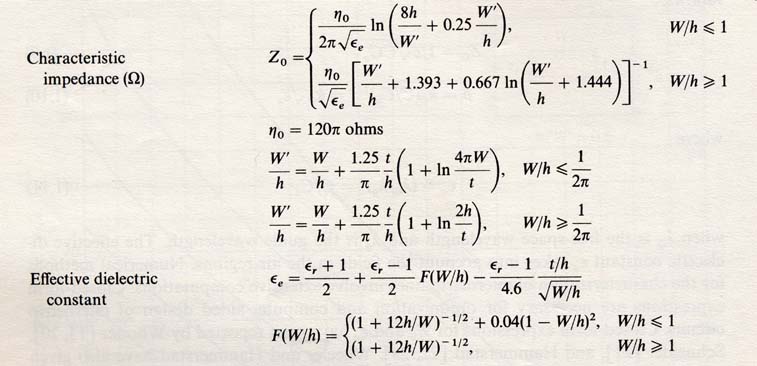
If you leave the relative permittivity Er blank, a default microstrip dimension will be used, and the characteristic impedance and the effective permittivity are calculated after selecting the Calculate button. Selecting the Another Calculation button will clear the dimension fields and the result fields, then you can fill in the dimension of a new structure. If the dispersion is not considered (No is checked), the quasi-TEM approximation expressions are used to calculate Z0 and Eeff; while the well known Yamashita dispersion formula will be used to calculate Z0(f) and Eeff(f) if the dispersion is considered (Yes is checked). Equations used to make these calculations can be found in the book [1], and are also provided at the bottom of this page.
|
|

|

 [1] K. Chang, "Handbook of Microwave and Optical Components", Vol 1,John Wiley & Sons, New York, p. 30, 1989.
[1] K. Chang, "Handbook of Microwave and Optical Components", Vol 1,John Wiley & Sons, New York, p. 30, 1989.